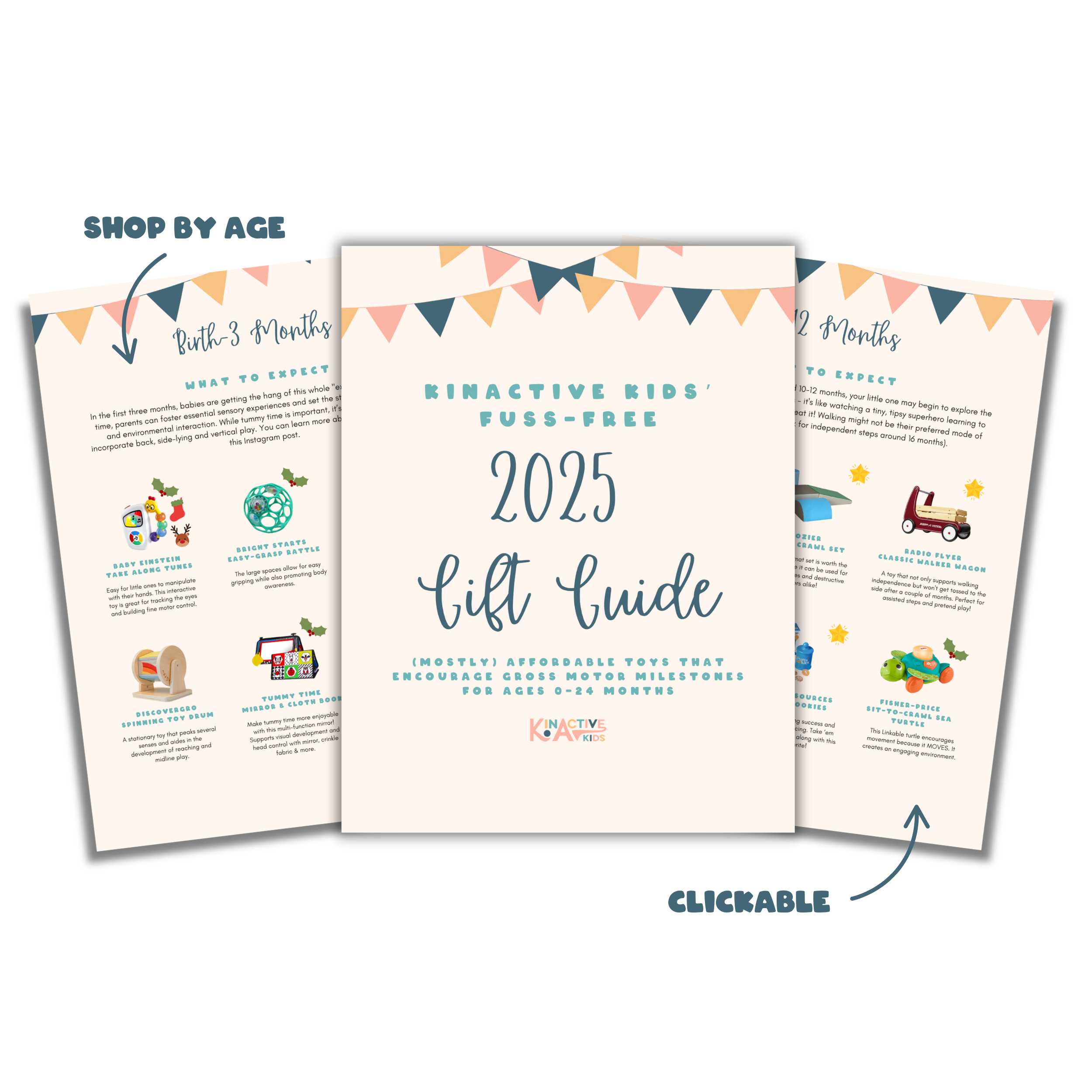Busy Mom’s Guide to Preventing Flat Head

Life with a baby is a juggling act. Between hitting milestones, older siblings, endless laundry, and trying to sneak in a hot cup of coffee, the advice to “just do more tummy time” can feel laughably out of touch. But one thing that is worth your attention? Preventing flat head (aka plagiocephaly prevention).
The good news is, you don’t need a perfect routine or fancy equipment. Simple positioning tweaks and small daily habits can go a long way in protecting your baby’s head shape—even when life feels chaotic.
What is Plagiocephaly?
Plagiocephaly is the medical term for a flat spot on a baby’s head. It’s incredibly common, especially in our container-loving culture of car seats, swings, and strollers. But here’s something you might not hear often enough: flatness is rarely just from positioning alone.
Sometimes, babies develop flat spots due to tight neck muscles, a condition called torticollis, or even from prolonged pressure in the womb. Regardless of the cause, the good news is that gentle repositioning can make a big difference early on.
Why Flat Spots Happen
Babies’ skulls are soft and moldable to accommodate rapid brain growth. When too much pressure is placed on one area, that part of the head can flatten. The good news? With early attention and simple positioning strategies, you can help support healthy head shape as they grow.
What is Repositioning?
Repositioning simply means unweighting the “sweet spot”—the flattened area—so that part of the skull has a chance to round back out as your baby grows. Small adjustments to how you hold, carry, and position your baby can relieve pressure and promote even head growth.
Don’t panic. You don’t need fancy gear or a perfectly structured schedule. You just need a few clever positioning tricks you can layer into your already busy day.

8 Plagiocephaly Prevention Hacks For Busy Parents
1. Sidelying (on the opposite side of flatness)
No tummy time? No problem. Sidelying is a great alternative and still takes pressure off of their head. Lay your baby on their side on a firm surface with a rolled-up blanket behind their back for support. Bonus points if they’re looking at something fun, like a toy or their favorite thing in the world: your face.
2. Alternate Sides for Sleep & Diaper Changes
One of the easiest ways to prevent a flat spot is by switching up your routines. Alternate which side your baby faces when laying them down to sleep (following safe sleep guidelines) or during diaper changes. These small shifts help promote balanced muscle use and take pressure off the same spot.
3. Forward-Facing Carry (Inclined Tummy Time)
Hold your baby against your chest, facing out and tilted slightly forward. This “tummy time on the go” not only helps build neck and trunk strength but also takes pressure off the back of their head—making it a great plagiocephaly prevention trick. Perfect for reflux babies who struggle with floor tummy time, plus it gives them a front-row seat to explore the world!
4. Use a Baby Carrier (Facing In, Off the Flat Spot!)
A baby carrier = one of your best flat-head prevention tools. Facing in means baby’s head is supported and unweighted. Extra credit: gently rotate their head to the side they don’t prefer. It’s a subtle stretch that works wonders over time.
5. Propped Tummy Time
For babies who struggle with reflux, traditional tummy time can be a challenge. Instead, try tummy time on an inclined surface, like an exercise ball, with their shoulders positioned above their hips. This keeps pressure off their tummy while still engaging neck, shoulder, and trunk muscles. You can also recline back with baby on your chest or prop them over a rolled blanket or nursing pillow for a gentler angle. Same great benefits—less spit-up drama.
6. Supported Sitting (Face-to-Face!)
Once the baby has some trunk control (think 3–4 months), you can start practicing assisted sitting. Sit them in your lap facing you, or let them perch on the edge of a couch or table while you support their trunk. Keep it fun—sing, talk, make silly faces. They’ll stay upright longer when they’re engaged.
7. Move the Car Seat to the Other Side of the Car
Babies naturally prefer turning their head toward familiar patterns of light or movement. Switching the car seat to the opposite side encourages them to look the other way, helping unweight the flat spot during drives.

Timing Matters
The skull starts to harden (ossify) around 5-6 months, which means early intervention is key. The most effective window to correct flat spots with repositioning—or with a helmet if needed—is between 3-4 months.
Final Thoughts
You don’t have to overhaul your entire routine for plagiocephaly prevention. These tiny shifts in positioning and movement go a long way in protecting your baby’s noggin—and they’re all things you can do with minimal time, gear, or brain power. (Because let’s be real—you’re using all your brain power just keeping everyone alive.)
Remember: If a flat spot has already started forming, the best window for correction is before 4 months. And if you’re ever unsure or concerned? Don’t wait. A specialist can help guide you with personalized tips—or refer for helmeting if needed.
So take a breath, mama. You’ve got this. One sidelying shift, forward-facing hold, and assisted sit at a time. Small, intentional moves add up. Progress, not perfection.



